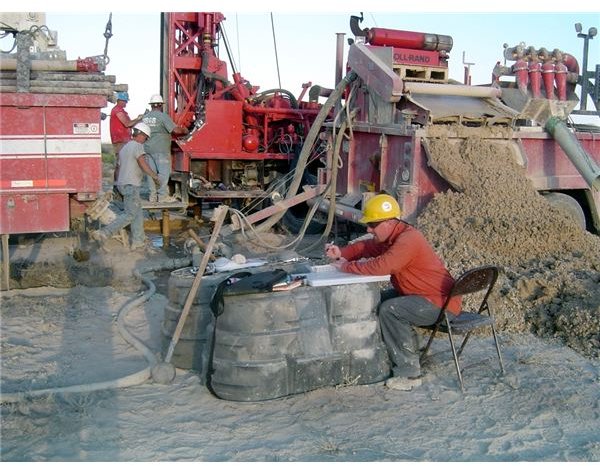High Definition Induction Logs and Optical Anisotrophy
Induction logging of oil and natural gas wells started after the Second World War. Induction logging technique was derived from the post war mine detector technology. Today, the induction logging technology is much more advanced and introduction of high definition logs had made it a lot easier to find out resistivity of different zones of drilling and extract accurate information of the well constituents. A logging tool is lowered down into the well and as it moved deeper into the well, it encounters different types of soil, rocks and minerals. Graphical methods are then used to find out the oil and gas traces in the well by making use of the properties of soil and rocks encountered by the logging tool.
Induction Logging - How It Works?
Oil and well exploration is an expensive activity and it consumes a lot of resources. High definition induction logs are an effective way to find out the accurate traces of oil and gas inside the wells. It helps to drill in the right direction because if the boring is misdirected, it will increase the expenses by a great percentage and that even without producing any oil and gas, which would be a futile exercise for the drilling company. As boring progresses, with the help of invasion fluid the encountered soil and rock mass is forced out of the well. The mass then gathers on the surface of well from where the invasion profile is developed. An invasion profile lets us know about the physical and chemical properties of the well or boring hole. The mass that is accumulated on the surface of the well is generally termed “mud cake.” Mud cake is thick ionic mass of soil, minerals & aggregates and mud logging provides information about the conductivity resistivity of the bore-wells.
There are numerous formulas that can be used to determine the conductivity properties of mud cake. One is the Archie Formula which makes use of different measurements like percentage of water in pore space, resistivity of rock mass, and formation resistivity. The basic formula remains the Universal Ohm’s Law of V =IR. Calculating resistivity of the well constituents helps in determining the conductive and non-conductive areas of the well. Conductive zones mean presence of water, mud and minerals where as non-conductive areas indicate presence of hydrocarbons (oil and gas).
High definition induction logging has made it simple and accurate to determine the hydrocarbon traces beneath the earth’s surface. Compared to conventional logs, HDIL can work for oil based mud logging, high porosity conditions and not to mention, works best in fresh mud areas. HDIL will even work in an empty well and enables the engineers to get a beforehand idea of the well properties.
HDIL & Optical Anisotropy
In thinly laminated regions, where the hydrocarbon content is lower, induction logging often indicates zero non-conductivity. However, if formation resistive optical anisotropy can be incorporated with the logging tools, better results would be obtained and even low hydrocarbon density wells can be used to extract oil and gas. A large proportion of world’s oil and gas reserves are trapped in sand and shale and with the help of formation resistive anisotropy, all these sources can be surveyed for viable possibilities. HDIL and optical anisotropy belong to Array Resistivity methods and they mainly focus on determining the precise location of water-caps or water-oil contact points in the well bore. Earlier induction logging methods were analog and used a complex electrode and coil systems to determine the well properties. However, modern technologies like inversion processing and geo-steering applications have allowed oil companies to save cost on misdirected boring. They also make use of electrodes and coil bucking methods but integration with transmitters and multi-propagation tools have increased their accuracy by a great margin.Because we know the crucial points in the well beforehand, proper safety techniques can be put in place so that the bore well remains productive even if there are few weak zones in the well. This way the problem is already half solved by knowing in advance which parts require special care and attention while digging.
Array resistivity methods are very helpful for exploration, study and survey of horizontal wells. HDIL and high definition lateral mud logging methods are very suitable for horizontal and near-horizontal wells. Implementation of these technologies will help oil companies to explore horizontal wells too, which once were considered useless and money eating zones. The best thing about these methods is that they are fully automatic and machine controlled. The lateral and high definition logs can be used for further study of the region and the scope is not limited to the study of just an oil well. The data and information provided by these logs is accurate and it can be used to study the general properties of the whole region, which again is going to save time, money and resources.
References
Induction Logging, Petrolog
Real Time Estimation of Optical Anisotropy, Ebook.lib(pdf)
Application of Array Resistivity Methods, Paper
Mudlogging Image, Wikipedia
